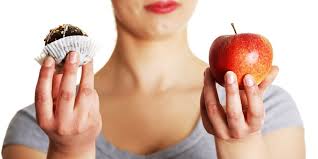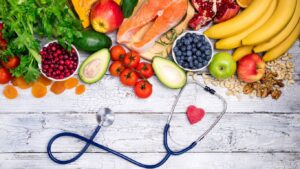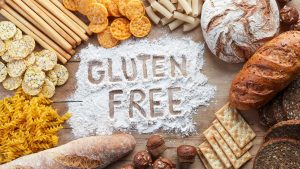10. Avocados
Avocados get their creamy texture from healthy monounsaturated fats, which take a long time for our bodies to digest and, therefore, can help suppress appetite. They’re also an excellent source of soluble fibre, which forms a thick gel as it travels through the gut, slowing digestion.
Avocados are a versatile food — you can slice them up into salads or sandwiches, mash them up for dips and spreads, blend them into a smoothie or eat them whole with a spoon. Remove the pit and squeeze some honey on it iff you like them sweet, or sprinkle salt and pepper, and add a squeeze of lime for a savoury treat.
9. Flax
Flaxseed is rich in fibre and healthy omega-3 fats, and is also a source of protein. A Danish study published last year in Appetite research journal found that when subjects were given 2.5 grams of flaxseed fibre supplements — about the same as a tablespoon of ground flax — they reported feeling fuller when compared to placebo, and also ate less when they were served lunch a few hours later.
Our bodies cannot digest the hard shell on flaxseeds, so they will need to be ground up in order to get the full benefits. Store flax in the freezer to help preserve the delicate omega-3 fats. You can add a tablespoon to your morning smoothie or yogurt, or even sprinkle it on salad for a bit of texture and nutty flavour.
8. Greek Yogurt
Greek yogurt is made by straining regular yogurt to remove most of the whey, which concentrates the nutrients, making this a high-protein appetite buster. The thick, creamy texture of the yoghurt also helps to trick our bodies into feeling fuller. You can eat Greek yogurt as you would any other yoghurt — add fruit and/or nuts to boost the satiety factor — or use plain Greek yogurt as a substitute for sour cream on its own or in a dip recipe.
Be careful of “Greek-style” yogurts — some brands get their thickness from the addition of cream, making them high in fat and not the best choice if you are trying to lose weight.
7. Water
Although water passes through the digestive system quite quickly, it can still help decrease your appetite. Often we mistake thirst for hunger, especially when the mid-afternoon cravings hit. Sipping water and staying hydrated throughout the day helps you stay alert, so you can resist grabbing a candy bar or a coffee for that temporary fix. It also keeps your stomach from becoming completely empty, which keeps hunger levels down.
Drinking a glass of water before a meal can also help to fill your stomach temporarily, making it easier to manage your portion sizes when you actually sit down to eat.
6. Legumes
Legumes, or pulses that include beans, peas, lentils and chickpeas, are an excellent vegetarian source of protein that can be enjoyed in soups, salads, chilli, stews and more. They are high in soluble fibre as well as complex carbohydrates called resistant starch and oligosaccharides. Like fibre, these complex carbs cannot be digested by our bodies and help to slow digestion.
Research has shown that legumes may help decrease our appetite at a chemical level as well – specific compounds called trypsin inhibitors and lectins promote the release of a hormone called cholecystokinin (CCK), which slows the emptying of our stomach, helping us stay satisfied.
5. Soup
Having soup alone as a meal may not last you for very long, but it can help you control your portion sizes when you have it pre-meal. A study from Pennsylvania State University found that when subjects ate a bowl of chicken rice soup before they were served lunch, they reported that they felt significantly fuller and ate about 100 calories less than when they were served a chicken casserole (made with the same ingredients as the soup) and a glass of water as an appetiser.
If you are trying to cut weight, choose broth-based soups loaded with chunky veggies vs. high-fat, creamy soups. The act of chewing will also help trick your body into feeling fuller for longer. If you are having soup as a meal, make it complete with protein in the form of meat or beans, and a starch like rice, noodles or barley.
4. Cottage Cheese
It’s no wonder that cottage cheese is a healthy snack choice for dieters and bodybuilders alike. It is much lower in fat compared with other cheeses and is a good source of protein, particularly casein, which is known to suppress appetite. Cottage cheese can be enjoyed sweet with fruit, or savoury with some freshly cracked black pepper.
3. Oats
It’s not surprising that many fast food restaurants and cafes are jumping on the oatmeal bandwagon -it is the breakfast of champions. Oatmeal gets its thick, gluey, texture from a type of soluble fibre called beta-glucans. Not only do the beta-glucans travel slowly through our digestive tract, keeping us full until the lunch hour, but they also help to lower cholesterol by trapping bile and carrying it out of our bodies, forcing us to use our blood cholesterol to make more bile.
You can make oats even more filling and nutrient-dense by adding extra protein in the form of milk, yoghurt or nuts and seeds, and/or adding extra fibre in the form of fruit.
2. Meat
The high protein and fat content in meat means that it is digested more slowly than most foods. Meat also takes longer to chew, which also contributes to feeling full. The appetite-suppressing effects of meat may also be a learned behaviour. To many, a meal is not complete without meat, so it may make you feel fuller psychologically.
Numerous studies have shown that there is no difference between beef, chicken and fish in terms of satiety, but for overall health, fish and lean cuts of poultry are more nutritious.
1. Almonds
Finally, almonds are another great source of healthy fats and make for a great snack between meals -provided you watch portion sizes. The hunger-reducing effects of nuts tend to take about half an hour before you feel them, so eat them before you reach the point of being extremely hungry, or you’ll be tempted to eat more than you need.




